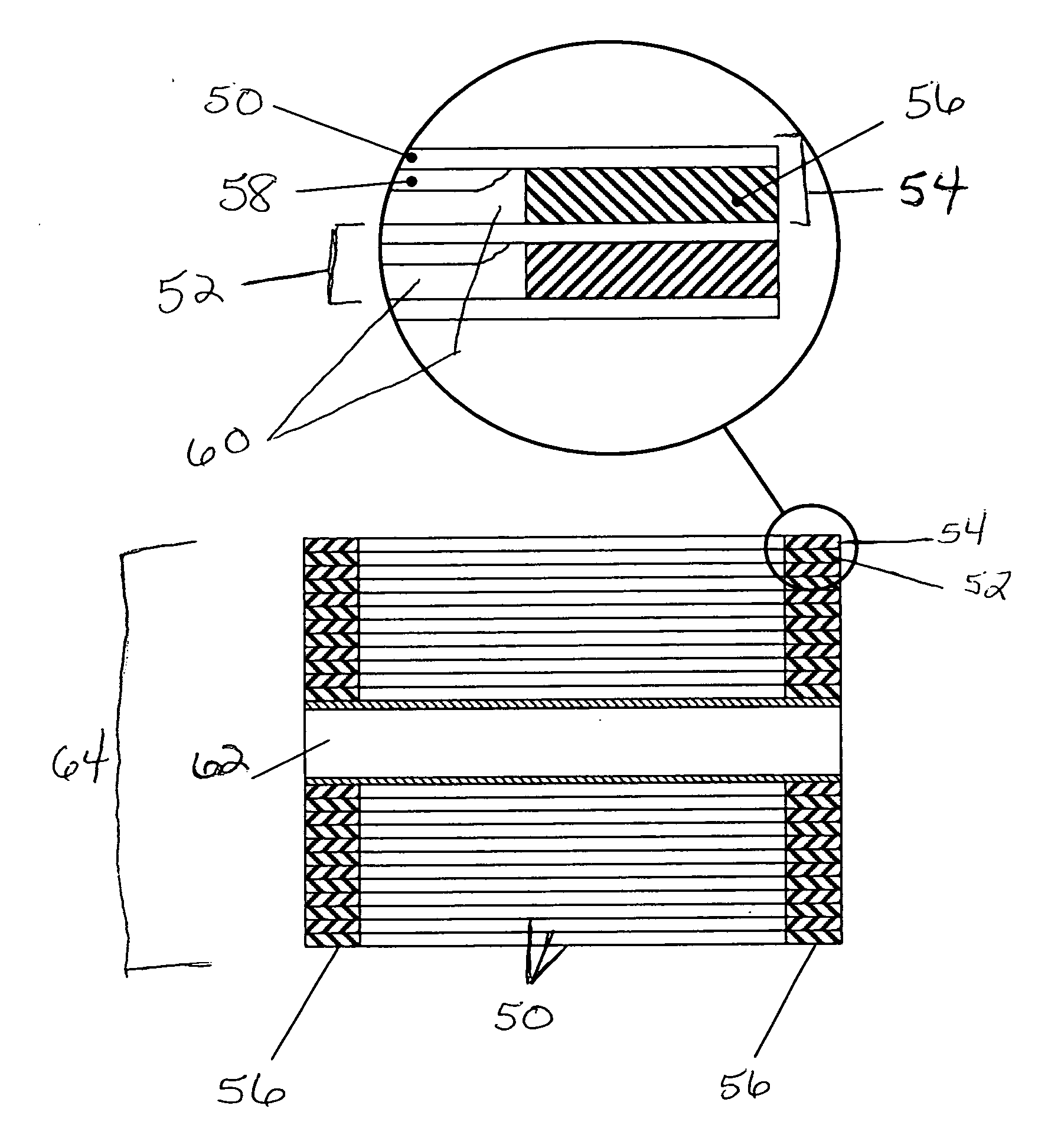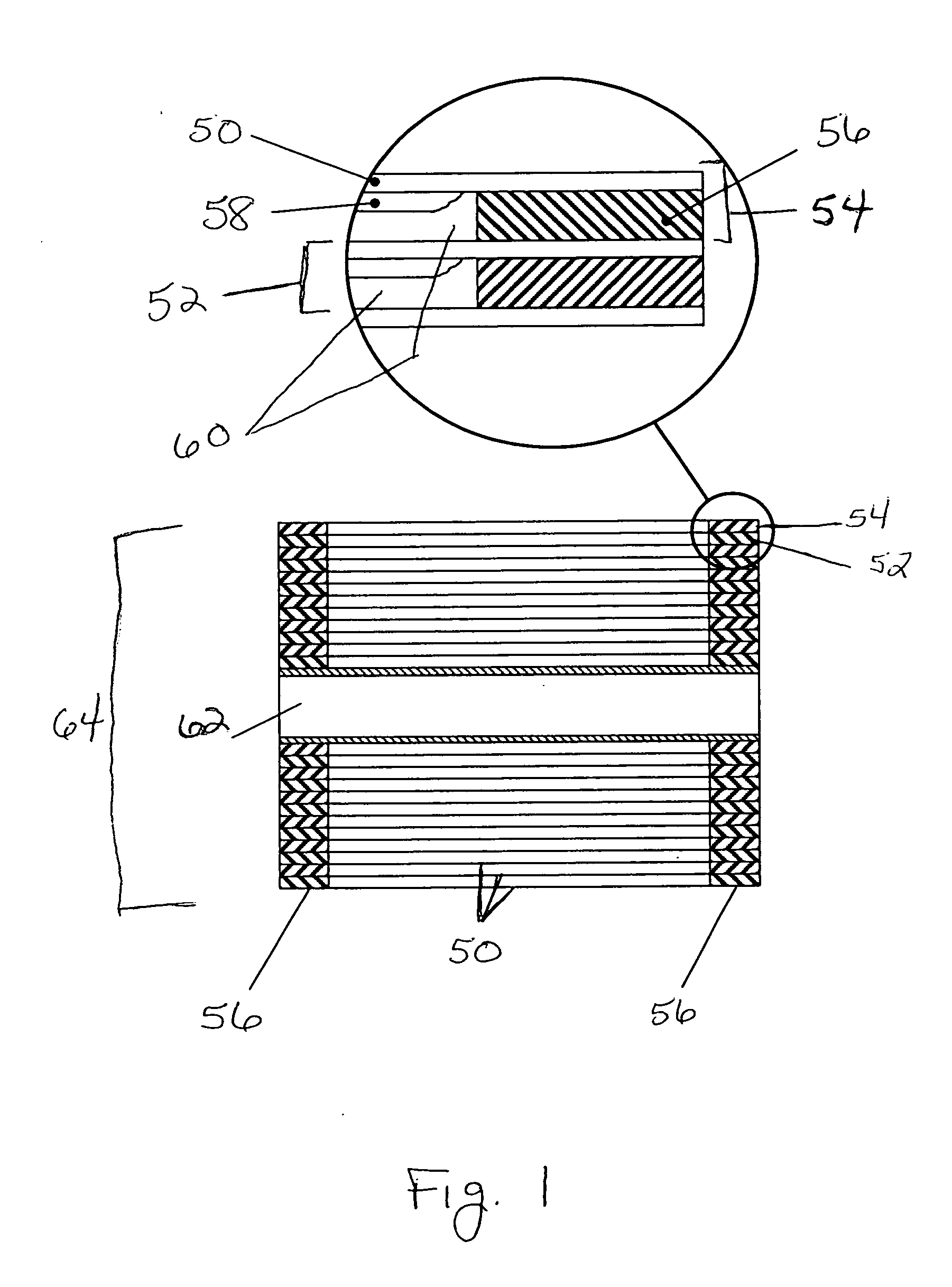Continuous support interleaving
a technology of interleaving and supporting materials, which is applied in the direction of transportation and packaging, other domestic articles, synthetic resin layered products, etc., can solve the problems of screen-printed materials not being able to come in contact with other materials, lcds may be more complex and have additional components, and the entire roll can become unusable, so as to reduce the effect of blocking, relieve the pressure in the wound, and avoid any deleterious effects
- Summary
- Abstract
- Description
- Claims
- Application Information
AI Technical Summary
Benefits of technology
Problems solved by technology
Method used
Image
Examples
example 1
[0089] A Velcro® fastener material was used as the interleaving material in this experiment. This material came in 1″ wide strips by 25 yards in length. The Velcro® fastener material was obtained with an adhesive backing on it.
[0090] The Velcro® fastener material was attached to the support, one strip at a time, along each edge. The support was threaded up on a respooler. The respooler was equipped with a winder, unwinder and a separate braked unwind. One roll of Velcro® fastener material was mounted on the braked unwind. The respooler was started and the winder began to wind a roll. As this was occurring, the backing of the Velcro® fastener material was peeled off and the adhesive side of the Velcro® material was applied to the winding support. This was done until the Velcro® fastener material spool was empty. Once the Velcro® fastener material spool was empty, the respooler was stopped and a new Velcro® fastener material spool was mounted to the unwind brake and the process conti...
example 2
[0100] A liquid crystal display is prepared as follows: A 125 micron polyethylene terephthalate support is coated with a layer of ITO (300 ohm per square resistively) forming the first electrode. The ITO is laser etched with thin lines to electrically separate rows in the first electrode. Each row corresponds to an individual character in the display. An imageable layer containing gelatin and droplets of cholesteric liquid crystal is coated on the ITO layer. A color contrasting black layer containing gelatin and cyan, magenta, yellow, and black pigments is coated on the imageable layer. Thin bands of the two coated layers are removed along on edge of the display perpendicular to the laser etch lines. This exposes the ITO along the edge of the display to allow electrical contact to the first electrode. A conductive UV curable ink is then screen printed on the color contrasting layer, exposed to UV radiation and wound on a spool with interleaving in accordance with the current inventi...
PUM
| Property | Measurement | Unit |
|---|---|---|
| thickness | aaaaa | aaaaa |
| thickness | aaaaa | aaaaa |
| thickness | aaaaa | aaaaa |
Abstract
Description
Claims
Application Information
 Login to View More
Login to View More - R&D
- Intellectual Property
- Life Sciences
- Materials
- Tech Scout
- Unparalleled Data Quality
- Higher Quality Content
- 60% Fewer Hallucinations
Browse by: Latest US Patents, China's latest patents, Technical Efficacy Thesaurus, Application Domain, Technology Topic, Popular Technical Reports.
© 2025 PatSnap. All rights reserved.Legal|Privacy policy|Modern Slavery Act Transparency Statement|Sitemap|About US| Contact US: help@patsnap.com



